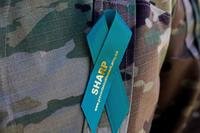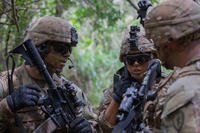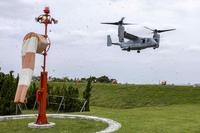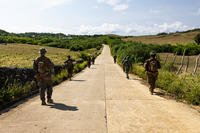FORT BENNING, Ga. -- The Army’s shoulder-fired 25mm airburst weapon that many soldiers call “the Punisher” is slowly winning the approval of the infantry after a decade of scrutiny.
The boxy, futuristic-looking XM25 Counter-Defilade Target Engagement System recently completed a 14-month battlefield assessment and is on its way to earning a permanent position in the infantry squad beginning in 2014, Army weapons officials said.
XM25 is an offshoot of the Objective Individual Combat Weapon program the Army began in the mid-1990s to increase the effectiveness of soldier firepower.
The weapon features a target acquisition system that calculates the range to a target with a push of a button and transfers the data to the electronic fuse built into the 25mm round. When fired, the projectile is designed to explode directly above targets out to 600 meters, peppering enemy fighters with shrapnel.
The XM25 has created a lot of excitement in the infantry community, but it has also attracted its share of criticism from door-kickers that the five-shot, 14-pound weapon system is more of a burden than a benefit to combat units.
In March, elements of 75th Ranger Regiment refused to take XM25 with them for a raid on a fortified enemy compound in Afghanistan, sources familiar with the incident said.
After an initial assessment, Ranger units found the XM25 too heavy and cumbersome for the battlefield. They also were concerned that the limited basic load of 25mm rounds was not enough to justify taking an M4A1 carbine out of the mission, sources say.
Command Sgt. Maj. James Carabello, the CSM for the Maneuver Center of Excellence here at Benning, doesn’t share this opinion.
Carabello, who has served in units such as the 75th Ranger Regiment and the 82nd Airborne and 10th Mountain divisions, called the XM25 “a game-changer.” During a deployment to Afghanistan in 2011, Carabello’s soldiers from 3rd Brigade Combat Team, 10th Mountain, used XM25s against enemy fighters on several occasions, Carabello said during a Sept. 20 round-table discussion with defense reporters at the 2012 Maneuver Conference.
In southern Afghanistan, the terrain is covered by low, dirt walls that Afghans use to grow grapes.
“They are about three-to-four feet in height, usually separated by about five-to-six feet,” Carabello said. “The enemy did use that to their advantage, where they could hide and engage our soldiers.”
These walls were often two-to-four feet thick, so it made it difficult for M4s, M249 squad automatic weapons and M240 machine guns to penetrate them, Carabello said.
“Well I’ll tell you that the XM25, when employed, was a game-changer,” Carabello said. “We absolutely defeated any enemy force that we deployed the XM25 against. … It’s a devastating weapon system and it absolutely changes the face of battle when we were in direct-fire contact with enemy forces.”
The XM25 grew out of its predecessor, the XM29 -- an over-and-under system with a 5.56mm carbine on the bottom and the 20mm airburst weapon on top. It stalled in the face of technical challenges that made the 18-pound weapon too heavy and bulky. The program ended up costing about $100 million.
The current XM25 recently wrapped a 14-month battlefield assessment in Afghanistan. Weapons officials used soldier feedback from the assessment to incorporate “more than 100 improvements” to the ergonomics and reliability of the weapon, said Col. Scott Armstrong, who runs Project Manager Soldier Weapons.
Weapons officials have accelerated the production of 36 of these newer XM25s for a second battlefield assessment scheduled to begin in January, Armstrong said.
The goal is to have senior leaders approve “a production decision next fall and, a year later, begin fielding the system in the fall of 2014,” Armstrong said.
This new addition to infantry squad could cost close to $25,000 each, but weapons officials argue that XM25 is worth it.
“This brings an entirely new capability to the soldier for the counter-defilade fight; to be able to get the enemy soldiers that are behind walls, behind trees or in buildings,” Armstrong said.





























